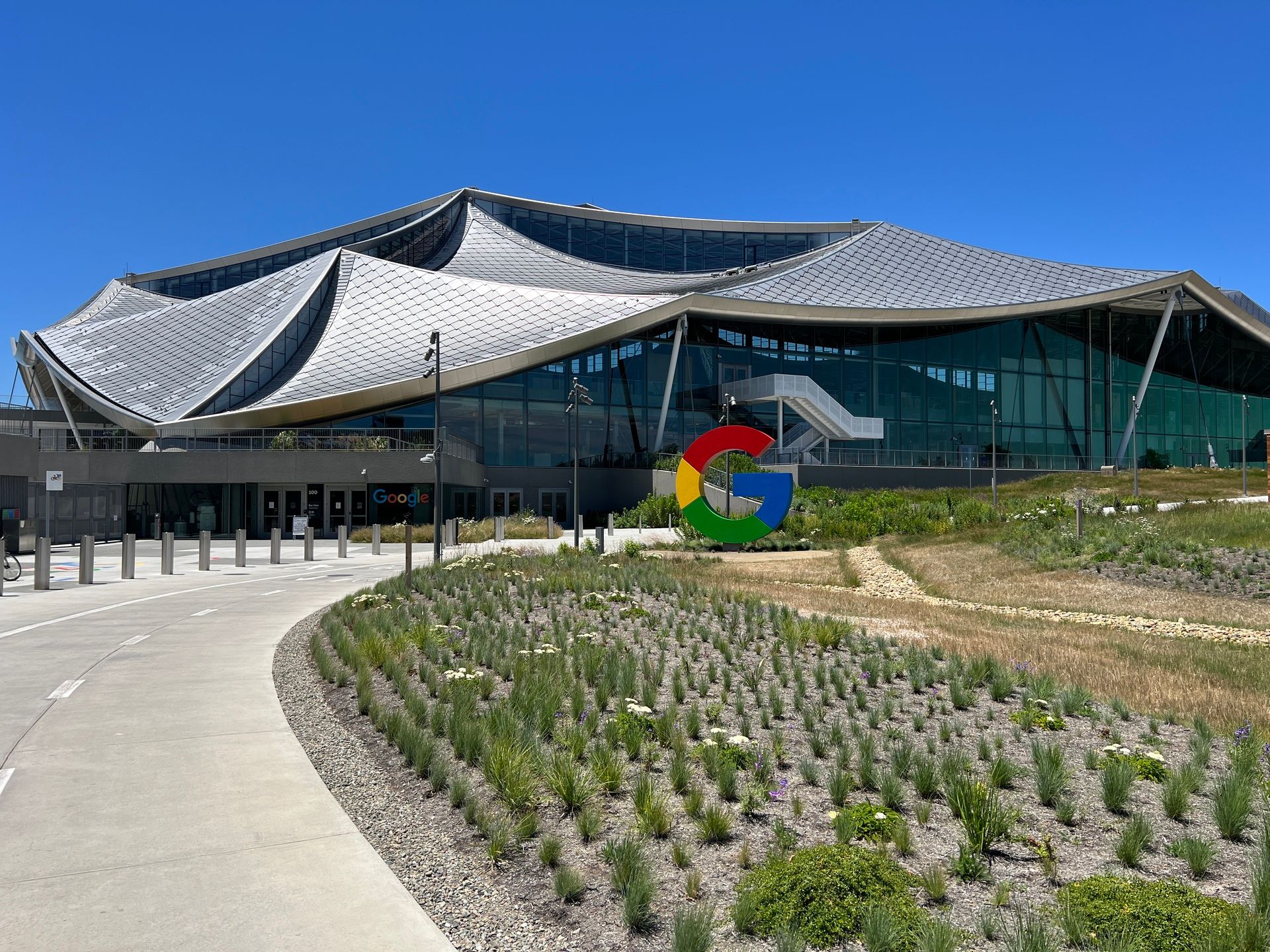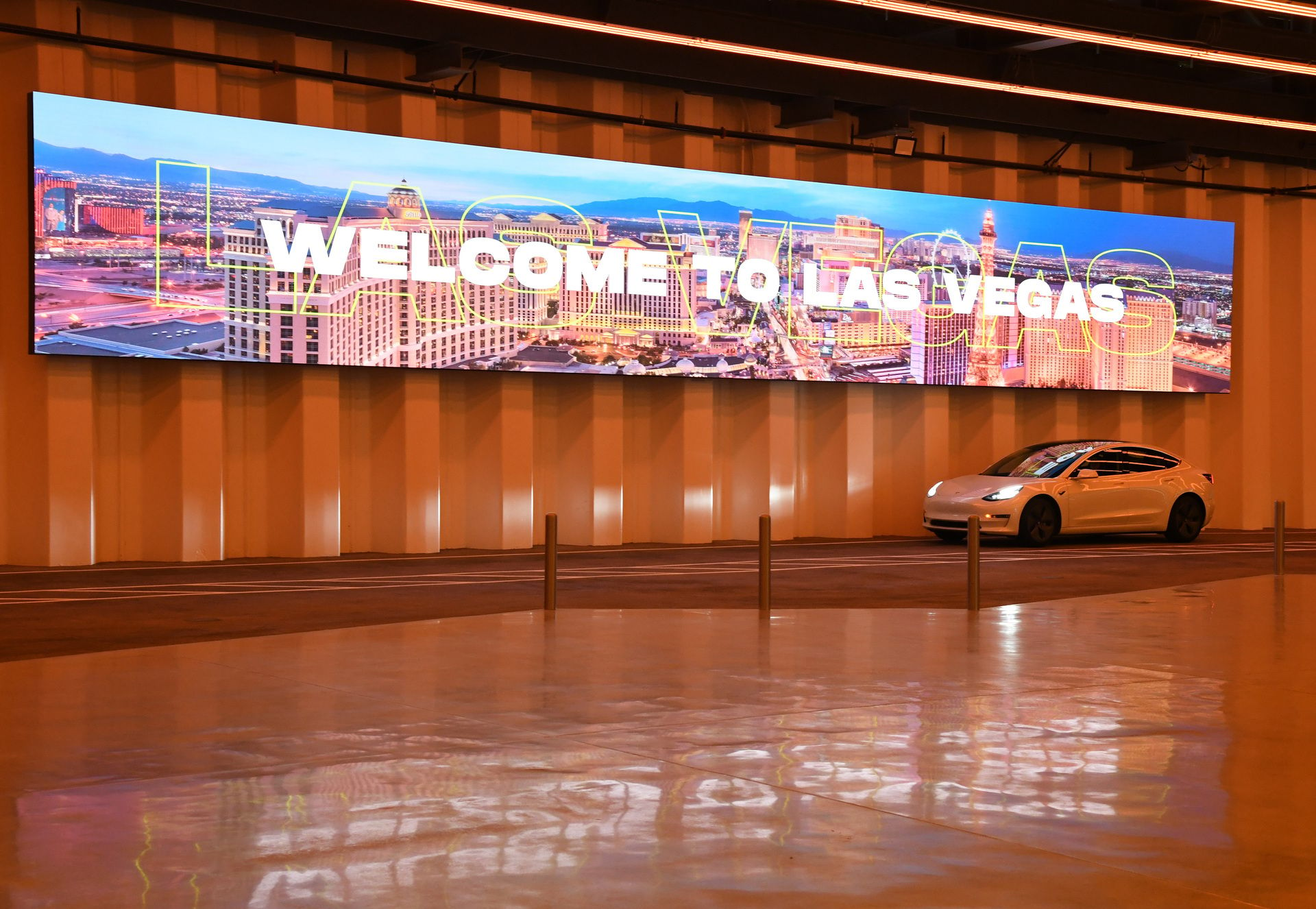
New Google headquarters in King's Cross, London. Getty
In King’s Cross, a mountainous edifice is taking shape. More than three times longer than Big Ben’s clock tower is tall, Google’s enormous new London HQ, one of the largest office buildings in Europe, is nearing completion. With a roof garden so expansive that it’s already sustaining wild foxes, the 330-metre-long “landscraper” is setting a new benchmark in the giant homes built for technology giants.
Google’s massive new office is only the latest in a slew of monster projects commissioned by American tech behemoths. Completed in 2023, EDGE East Side, occupied by Amazon, is now one of the tallest buildings in Berlin. In the Bay Area, another Google campus is the size of 15 football pitches. Nearly a kilotonne of sandstone was used to build Bloomberg’s 2017 UK head office. And the circumference of Apple’s circular San Francisco HQ is a mile long.

The EDGE East Side Tower in Berlin, occupied by Amazon. Photograph: Fabian Sommer/Getty
There’s nothing new about large companies commissioning large offices, but the sprawling record-setting vastness of these projects seems particular to the rapacious rise of oligarchical technology firms and their invariably male CEOs. The specific architects picked to design these corporate castles also tell a story. What do the tastes of billionaire tech bros, revealed through the designers they choose to work with, show us?

Google's Bay View campus in Mountain View, California. Photograph: Zhang Yi/VCG/Getty
Of the big buildings mentioned so far, three have been led by an architecture firm literally named BIG. Founded in Copenhagen, Bjarke Ingels Group designed both Google projects in collaboration with London-based Heatherwick Studio as well as the Berlin tower. BIG is also working on an “AI City” in China and “the Portuguese Silicon Valley”. They are the undisputed architects du jour of the tech world elite.

Danish architect Bjarke Ingels. Photograph: Franco Origlia/Getty
The eponymous Bjarke Ingels’s popularity among his tech bro clients is not surprising, given that he shares many of their attributes. A gifted hustler, he enjoyed commercial success from a young age, just as many software entrepreneurs make their mark before 30. He’s also cultivated a persona drenched in youthful Californian informality: T-shirts, unkempt hair, photoshoots with his feet on the desk.
Ingels worked hard to project a self-consciously playful juvenility, launching the practice’s first monograph in the style of a Frank Miller graphic novel, and creating architectural models made from Lego. At the time he felt like a breath of fresh air in the sometimes po-faced world of serious architecture. Ingels came across as a rakish disrupter, rewriting the rulebook of how architects could look and talk, just as Mark Zuckerberg’s zip-up hoodies changed the public image of billionaires.
I’m no prude, but a penis joke baked into the company URL? It’s frat house humour at best
However, the boyish brand was not always charming. Male architects are often accused of designing overly phallic buildings, but having christened his firm BIG, Ingles registered the domain name “big.dk". I’m no prude, but a penis joke baked into the company website? It’s juvenile frat house humour at best, creepily sexual at worst. You can almost hear the BIG lads down the pub laughing about their hilarious URL.
Is juvenility part of tech bro architecture, then? When I was a little boy I thought the best thing in the world would be secret tunnels connecting my home with my best friend’s house two doors down. I dreamed of hidden chutes down which an imagined subterranean car could ferry me. My vehicular tunnel empire was a delightful daydream, but quickly faded as I aged out of childhood. Yet for the richest tech bro in the world, there is no need to put childhood dreams aside.
Since 2019, Elon Musk has been digging the Vegas Loop, a network of underground taxis running through dedicated tunnels. With this Nevada project, the billionaire has built my childhood vision – and it sucks. Rather than trams or trains, Musk’s tunnels are exclusively for cars, massively curtailing the number of passengers they can serve. His company claims to have attracted three million passengers since it launched in 2021 – a pale shadow of the 500 million who’ve used the Elizabeth line in London since it opened a year later.

The Vegas Loop created by Elon Musk’s Boring Company. Photograph: Ethan Miller/Getty
The Vegas Loop is a boyhood fantasy scheme propped up on hubris and hype – one which has been accused of 800 environmental violations by regulators. Serious transport engineers know the project is a dud but Musk’s enormous wealth and coterie of credulous investors allow him to pursue infantile aspirations that most of us long grew out of. Something similar can be seen in tech bro architecture everywhere: big gadgets for rich guys whose early rise to fame and fortune sees them still pursuing the goofy goals of boyhood.
For most of us, life is not a fast track to billions by 30, but a frustrating struggle of false starts, career hiccups and scrabbling to make the rent. Our hearts get broken. Our childhood fantasies never quite materialise. But amid the grief of lost pipe dreams and unrequited crushes, we mature, learning that chasing grandiosity is a poor substitute for simpler lives lived among loving friends.
So many tech bros have never had to mature as the rest of us do. They’ve never had to face the disappointment of humdrum failure or day-to-day disappointment. Their stars rose early and are, mostly, still shining. Like a cursed version of Peter Pan’s Lost Boys, they seem unable to grow up, stuck commissioning architecture that reflects their perpetually adolescent tastes – largest, longest, tallest and so on. In the end, Google’s new King’s Cross HQ, like tech bro architecture at large, is a monument to men who never learned that bigger doesn’t mean better.
Phineas Harper is an architecture writer and broadcaster. They are the chair of the 2026 Architectural Association of Ireland Awards and a former chief executive of Open City. @phinharper